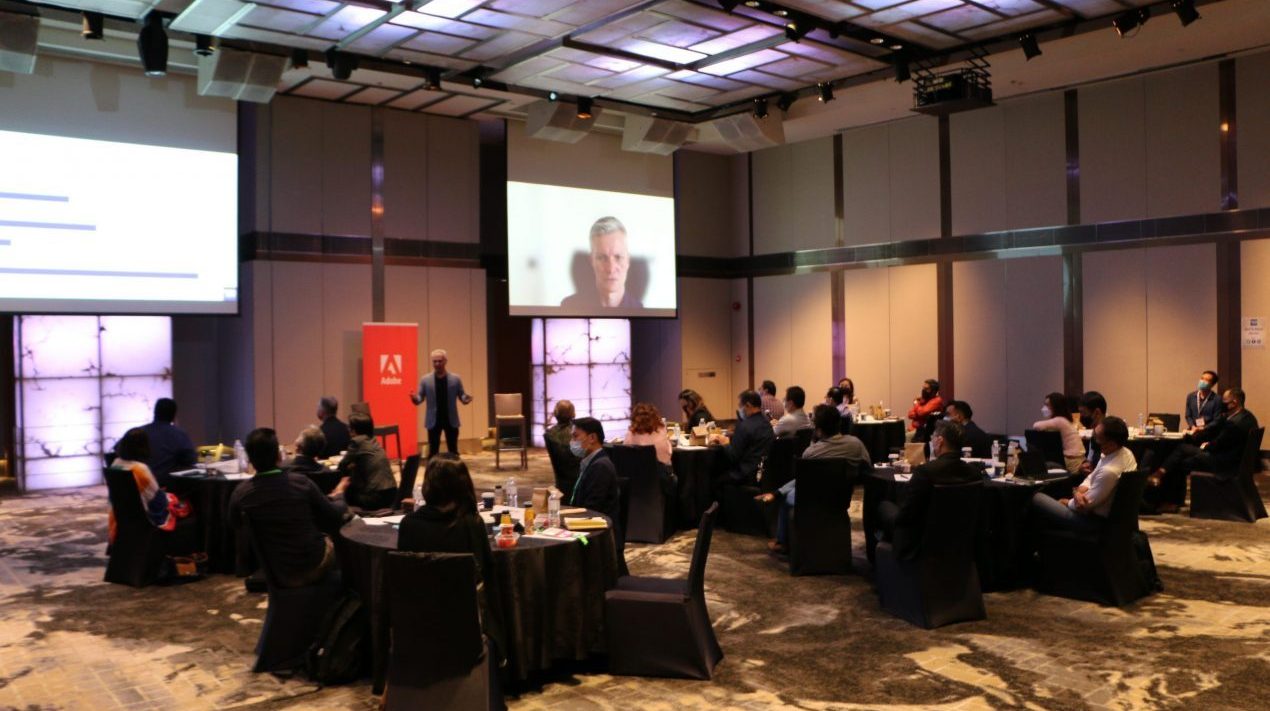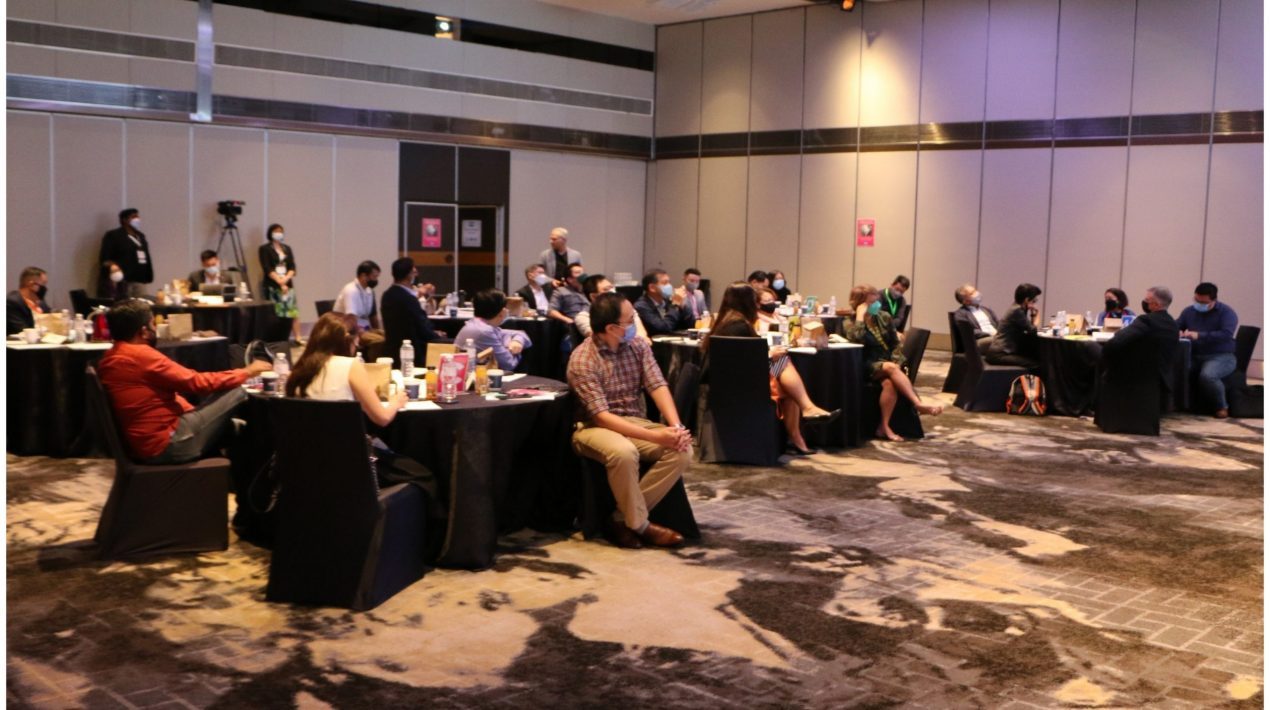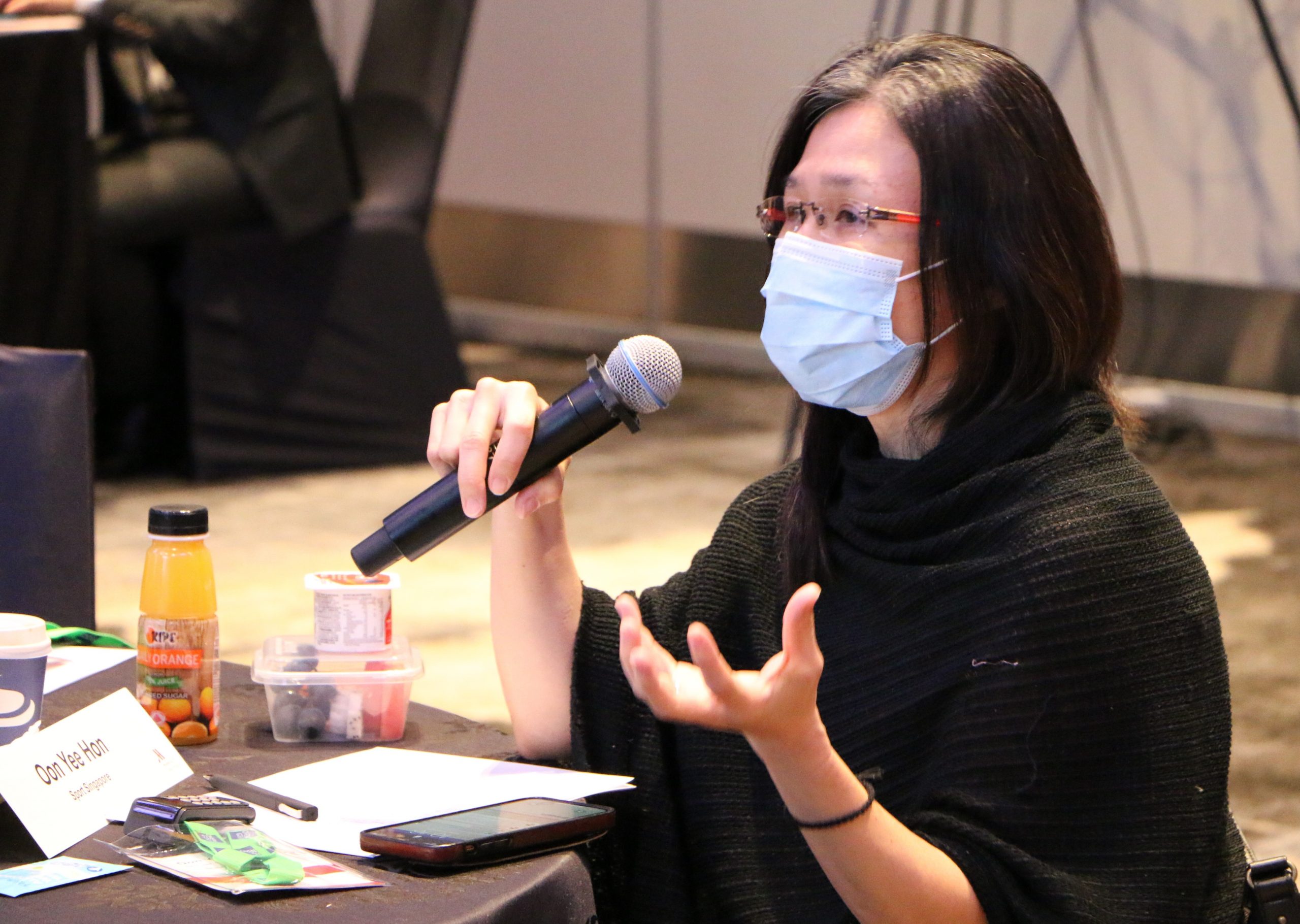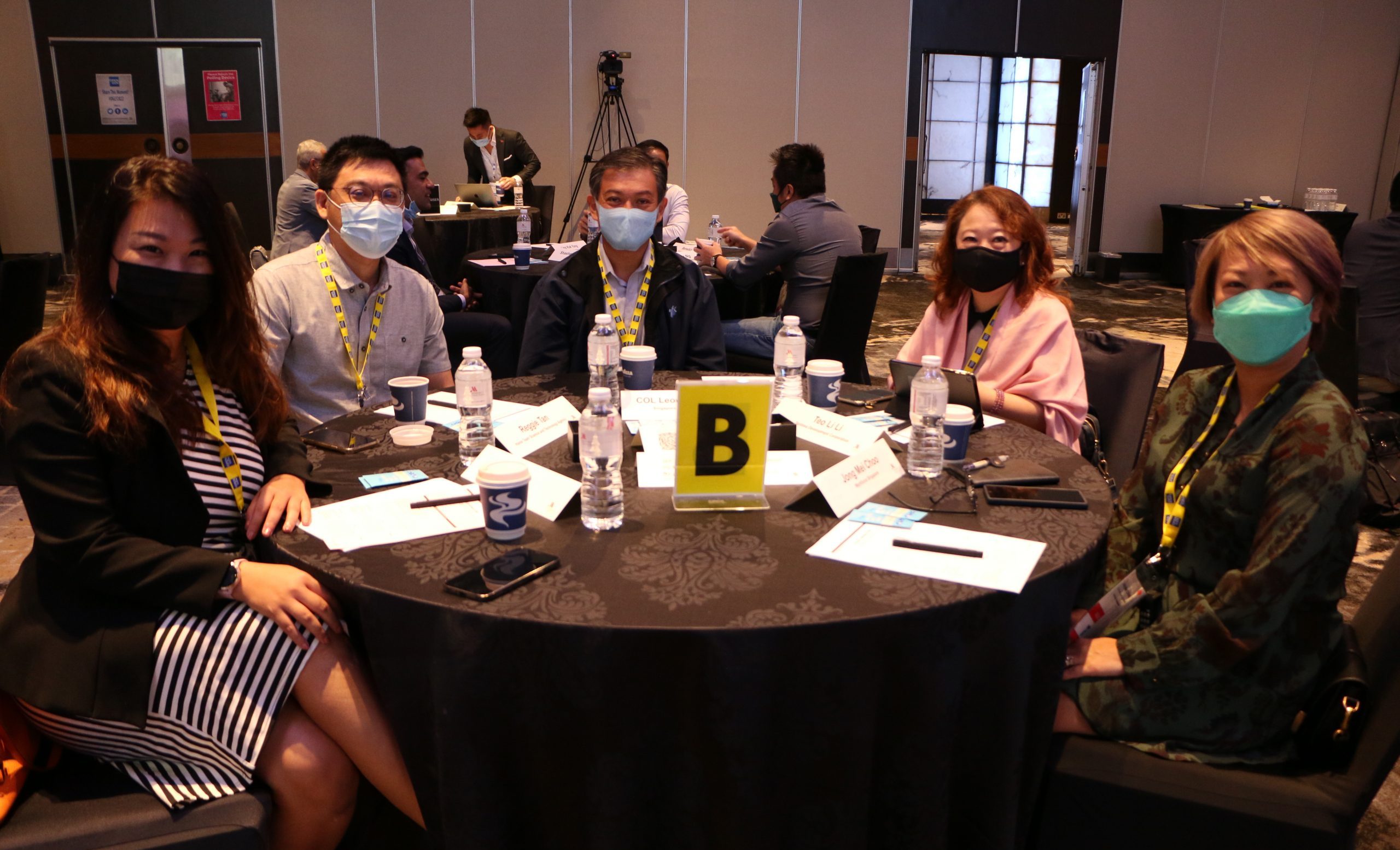
Since the advent of the pandemic, the public sector has rapidly embraced digital technologies. Yet, governments still have some way to go in meeting citizens’ expectations for a seamless, personalised, equitable and intuitive digital service delivery.
The crisis forced governments to rethink how to best serve citizens through proactive, transparent communication and citizen-centric digital offerings with always-on service. Indeed, citizens now expect more digitally-enabled public services and many want to have more of a say in how they should be delivered. At the same time, a segment of citizens lacks the skills or means to access digital services.
The Singapore government has pivoted successfully and was able to respond decisively and swiftly to the COVID-19 outbreak with a suite of digital tools to help disseminate timely and accurate information to Singaporeans.
At the same time, Singapore is not resting on past laurels and recognises that much more needs to be done. Citizens look for a level of service that can match the digital native businesses they often interact with on daily basis. Consider e-hailing, e-commerce and e-wallet players – they provide a comprehensive service completely through digital means.
In this new reality, a good citizen experience is one of the most essential components of an effective government. This means people need to know what is available and easily avail what they need. Irrespective of where people access the government, they should be able to navigate to where they need to be and get what they need to get.
Unfortunately, it is still a far cry from the seamless, personalised engagements that citizens have and expect from the private sector. While many governments are prioritising improvement in the way they engage with their citizens, archaic processes and outdated policies can often stymie good intentions. Getting information or accessing services from government agencies online continues to be a tedious process and often remains a frustrating experience in most countries.
A simplified, unified, cohesive experience across all departments and agencies is what whole-of-government is – efficiencies are being brought in through digital transformation using cutting-edge technologies. However, in a usually siloed environment, this is no simple task. Despite the availability and preponderance of platforms and solutions, and indeed, perhaps because of it, digital executives struggle to determine the best way forward.
The approach taken by the Singapore government acts as a prime example of how governments can move forward in this digital era. They have placed a strong priority on truly understanding its citizens’ pain points, which takes precedence over tools.
This raises two basic questions – What does it take to provide a smooth, efficient experience for citizens to navigate to where they need to be? What are some of the tools available to allow a unified, cross-department citizen experience?
The OpenGov Breakfast Insight on 25 February 2022 focused on ways to modernise and transform citizen experiences and a strong digital government, by implementing personalised, omnichannel outreach and engagement with the citizens.
The imperative of digital transformation in a post-COVID-19 world

Mohit Sagar, Group Managing Director, and Editor-in-Chief, OpenGov Asia, kicked off the session with his opening address.
“Culture in Asia has shifted drastically,” Mohit asserts. “Two years ago, working from home was unthinkable, but today it is accepted as the norm. And change continues to happen rapidly.”
We are in the age of Metaverse, Mohit adds. Cryptocurrency was once viewed with suspicion – banks denounced it and people called it a hoax. Yet in 2022, it has become the currency of the future and IT (Information Technology) companies are pumping money into cryptocurrency and NFTs.
The citizen is getting smarter and will only get more demanding, he feels. The fact is that the world is rapidly changing and there is a need to stay ahead of the curve and stay relevant – and people are capable of accelerating things.
Organisations were able to rapidly change governance and personalise information for customers and citizens. The Singapore government is one of the countries moving rapidly in the digital transformation space and an inclusive one.
Mohit observes that the key drivers in the public sector are:
- Serve Citizens Better: Government agencies are under pressure to improve the user experience to meet growing expectations and to help improve the lives of citizens.
- Leverage Technology: Government leaders are being urged to leverage new and innovative digital technologies.
- Security & Resilience: Governments must meet higher levels of security and innovate to address the pressures of rising cybersecurity activity.
- Regulatory Compliance: Governments must meet higher levels of governance and compliance requirements to address the pressures of stricter regulations and the privacy of data.
- Future Operating Model: Current operating models are proving unsustainable in the face of dramatic changes in the expectations of citizens.
He acknowledged in today’s hyperconnected world, demands from citizens are increasing. Since COVID-19 drove all aspects of life into the digital realm, businesses and institutions pivoted to serve them online. With this, people no longer must wait in line for a specific service or product because investments in wireless technologies have led to greater acceptance and adoption of digital services.
Citizen experience with the private sector, retail, commerce and finance, has made them used to personalisation. In his opinion, they consume things at an astonishing rate with super personalised services being offered through Artificial Intelligence and other technology.
To cope with demand and match expectations, governments are being driven to push the envelope, or, to put it another way: accelerate digital transformation. Against this backdrop, the main challenge for governments, now, as they strive to match the retail experience and meet citizens’ evolving demands is juggling multiple things at once – infrastructure, processes, security and upskilling.
“Engines determine how fast people can go, but one cannot have fast engines without brakes,” Mohit comments, making the point that trust and security are important checks for transformation.
The key objective is to deliver faster, more personalised, engaging, intuitive, anticipatory and responsive engagements with citizens and other agency stakeholders. For Mohit, technology is the enabler to achieve the objective. However, to be “digital to the core,” organisations must get every team member on the same page – everyone needs to be on board.
The needs of citizen expectation demand organisations and agencies to rethink, replan and reimagine their digital transformation outlook. It is no mean feat to deploy a sound, robust and agile strategy. That is why, Mohit emphasised, finding the right partner is vital to success. Working with experts allows agencies and governments to focus on their core missions and deliverables.
He exhorted the delegates and speakers to participate in the discussions at hand as the session had the potential to generate solutions and insights. This peer-learning and collaborative brainstorming could provide solutions that would be crucial for organisations to improve and become more citizen-centric.
Buttressing organisational capacities to cope with changing needs

Next, Simon Dale, Managing Director, Southeast Asia (SEA) and Korea Adobe, gave his welcome address and spoke on the experience of Adobe in supporting organisations in digital transformation.
Picking up on Mohit’s mention of the Metaverse, Simon shared that Adobe is currently putting a team to focus on that. With the assets and capabilities in the gaming industry to create high fidelity experiences, Adobe possesses cutting tools and experience to evolve with the times.
He highlights that Adobe has the technologies for digital citizen experience management – managing the digital customer journey which people are interested to get into. Adobe has become a leader because they have had to do it themselves and manage the change along the way. Adobe offers assistance as a practitioner of digital customer experiences.
Having studied the change programme and technology, he believes that long-term change management is absolutely necessary. Being a long-term cloud company, Simon knows that more customers have been using Adobe’s cloud service – it has become a mainstay for many of their customers. In addition, Simon emphasised that security and governance are important principles across Adobe’s capability suite.
Experience has taught Adobe the capability is different for the space of digital transformation. “We are in the business of helping organisations build the functional capability of organisations,” Simon contends.
In closing, Simon reiterates that Adobe’s value-add and expertise lie in assisting organisations in understanding the insights and learning how to manage the customer experience journey.
Delivering equitable, inclusive and citizen-centric digital services

John Mackenney, Practise Lead of Digital Strategy APAC, Adobe who followed, elaborated on the shift in the way governments are thinking about service delivery as they strive to meet new citizen expectations.
John echoed Mohit’s contention that organisations need to evolve and continue their journey of digital transformation. He remarks that the goal for many public sector governments is to provide better, fairer, more accessible services to support and empower everyone. The demands are essentials for a digital-ready public sector that is responsive ad resilient. The other goal is a thriving digital economy that is future-ready.
John observes that governments all over the world are bringing services to bear rapidly. There is a growing sense of urgency to get the digital experience right and strengthen public service delivery for the benefit of citizens and government. The future lies in building a world-class digital foundation to manage future disruption.
The events over the past 18 months have also clearly demonstrated the need for consistent, rapid communication during a crisis, and that is not expected to abate. Governments need the ability to rapidly send consistent, immediate public information during a crisis, he asserts, echoing Mohit’s earlier point about the need to enhance digital services to communicate more effectively with citizens.
Apart from that, finding a lower cost to serve is more important than ever as resources are increasingly scarce. To do that, governments need the ability to allocate services at the right places when needed, particularly during times of crisis.
Today, citizens expect smooth, personalised, and “always-on” experiences. For John, there are 4 key expectations:
- Trust and empathy: Citizens today expect more transparent, consistent, accessible, and responsive services. The relationship people have with services and governments have changed.
- Personalised and proactive updates: Governments are focused on delivering a greater level of satisfaction while reducing servicing costs.
- Journeys and segments: Citizens expect their digital journeys to be tailored to their needs.
- Respect privacy and preferences: Empowering citizens on how their information will be used and their right to be forgotten.
John notes that the challenge for governments now is in providing inclusive services for all. He opines that Singapore is one of the most digitally inclusive countries in the world and even then, there is much left to do. Some challenges include catering to citizens who are mobile-only users or who are less digitally savvy. Apart from that, the low levels of digital inclusion for older citizens increase the risks of social isolation.
“Governments recognise the need to double down on experience,” John asserts. Of all digital initiatives, citizen experience is ranked number one. Personalisation is the way public services can create efficiencies for citizens – making it easier for citizens to use services, improving understanding of citizen needs and making internal employee processes easier.
He explains that personalisation in government means connecting the right person with the right information and the right service at the right time in their journey. This entails:
- Meeting citizens where they are: deliver content through their preferred device
- Enabling digital self-service (e.g., surface the right service or form)
- Enable responsive content creation regardless of device
- Multi-language personalisation
- Deliver next best action or programme (e.g., recommending next best service)
“Driving personalised, differentiated and connected experiences across the constituent customer lifecycle enabling a real-time view of the customer to drive programme awareness, enrollments and operational efficiency,” John firmly believes. At Adobe, they believe that there are four pillars required to deliver personalisation and enable governments to pull data together:
- Data – Actionable Unified Profile: Real-time unified resident profile – a single source of truth for the entire resident experience
- Content – Content Management: Experience-focused digital asset management for dynamic content creation
- Journey – Omnichannel Experience Delivery: Manage complex resident journeys, provide support in real-time, and automate next best actions.
- Process – Centralised Information Management: Efficiently manage forms and information to reduce errors and increase resident trust
According to John, understanding the demands and needs has been a challenging task that some governments and agencies are currently undergoing. Making references to Mohit’s belief in partnerships, he is confident that Adobe can help agencies and invited delegates to explore ways they could collaborate.
Fireside Chat
 The session was followed by a fireside chat with Mohit Sagar, Group Managing Director & Editor-In-Chief OpenGov Asia and Terence Ng, Director – Policy & Technology Innovation Office, Health Promotion Board.
The session was followed by a fireside chat with Mohit Sagar, Group Managing Director & Editor-In-Chief OpenGov Asia and Terence Ng, Director – Policy & Technology Innovation Office, Health Promotion Board.
In the digital era, government services require a more consistent, connected citizen journey across channels, Mohit posits. Given this, he was keen to know what Terence thought about how the public sector can further transform and enhance citizen experience and provide engaging and personalised omnichannel services.
“Without a consistent backend, it is not possible to provide a consistent frontend,” Terence responds. “The consistency needs to be across all government services because citizens see the various departments as one government.”
Despite the rapid speed and tremendous success of the development of the Singapore digital services, there remains “nooks and crannies that need to be tightened.” The Health Promotion Board have implemented the National Steps Challenge which, unfortunately, does not utilise SingPass. He feels that there are people who are resistant to using their SingPass because of the fear surrounding data (mis)use.
As citizens see us as one government, Terrence suggests thinking through the connectedness of data from the citizen’s perspectives – to understand their interaction as a single journey across the board.
Highlighting the importance of inclusivity in public services, Mohit sought Terence’s insights on how to make the citizen services more inclusive, especially for the disadvantaged segment who lack the skills or means to access digital services.
“It has to be offline and online,” Terence is firmly convinced.
Doing services online solely is not possible because there are people who may not have the time or wherewithal to utilise digital services – the elderly and those of the lower-income families for instance. Easing this segment of the population into digital services may take a long time but once onboard, “digital is the way to go.”
Mohit picked up on Terence’s point that the citizen experience with the public sector is sometimes highly fragmented and diverse. He observes that government services are excellent when working in silos but less so across the board. Every department has a different standard operating procedure, platform, and interface – resulting in confusing and conflicting information.
Terence considers this to be an issue arising from different objectives, which results in differences in the collection of data. Within the ministries, there are differences in quality and sensitivity of data, much less the coordination across agencies. There is also an issue with collecting data from other institutions and organisations. To address that, he shares that the Health Promotion Board is trying to build a data pipeline through a federated approach.
Moving the conversation towards the outlook of digital transformation in the future, Mohit was curious to have Terence’s take on how the public sector can move forward in adopting technologies that help government agencies to provide information to citizens in an efficient, effective, timely and contextualised way.
For Terence, the use of AI (Artificial Intelligence) is key. It helps to ensure personalisation and consistent interaction. “Taking the human being out can make the interaction with citizens more consistent,” he believes.
Like Simon, Terence mentioned the potential of the Metaverse in the space of health. He remarks that mental health initiatives taken online, for instance, could thrive in that space. However, he notes that bringing it to people is but one step, getting people on board is another.
Ultimately, the backend needs to be in place and data needs to be connected so that citizens know that bespoke services can be delivered to them. He concludes that there needs to be a mindset shift within the government services for things to move forward.
Interactive Discussions
In the first poll, delegates were asked about their organisation’s top operational priority for improving the Citizen Experience (CX) in 2022. A quarter (25%) indicated that greater operational efficiency through automation was a top priority and another quarter would prioritise integrating citizen data into a single view of the citizen. The remaining delegates said they would prioritise  improving the digital capabilities/ skills of the teams (15%). Leveraging AI to provide better citizen experiences got 15% of the vote, while utilisation of real-time citizen data received and simplification/standardisation of tech stack both got 10%.
improving the digital capabilities/ skills of the teams (15%). Leveraging AI to provide better citizen experiences got 15% of the vote, while utilisation of real-time citizen data received and simplification/standardisation of tech stack both got 10%.
A delegate said that leveraging AI to provide better citizen experiences is his top priority because AI is a tool that will be able to provide insights critical in decision making. Another delegate echoed the importance of using AI and analytics to inform decisions.
John thought that improving digital capabilities/ skills of the teams might have been higher in the rank – having the right capability is important in supporting a transformation digital infrastructure. Nonetheless, he was encouraged to know that the citizen’s perspective is central to many of the government services. Mohit concurred that improving skillsets is an important part of the equation in the digital transformation journey.
On their organisation’s approach to Citizen Experience (CX) technology, half (50%) use multiple technologies/vendors for citizen experience management without a unifying platform while a quarter (25%) manage citizen experience with a management platform that they developed internally. The remaining delegates use a cloud-based customer experience management platform in concert with other CX/data management systems (19%) or exclusively use a cloud-based citizen experience management platform (6%)
One of the delegates opined that cloud-based solutions are the key is for his organisation – instead of being dependent on a single product, cloud allows for the incorporation of capabilities. Another delegate mentioned that a unified infrastructure is what they hope to build. With the different methods and technologies within the infrastructure, there is no one looking at the infrastructure as a whole.
John emphasised the need to make the data useful by having a more integrated platform to bring information and generate insights on how to better engage citizens.
Concerning the organisation’s biggest challenge in taking citizen experience to the next level, a third (33%) found the lack of citizen insights the main issue. The remaining delegates were split between poor integration between tech systems (27%) and a lack of digital skills/capabilities (20%).
“Businesses have moved but systems have not moved as quickly,” one delegate expressed. Expectations have changed but systems have not caught up, he contends. For him, the poor integration of tech systems is the biggest challenge.
 Another delegate found the lack of digital skills challenging. The government as a whole has gathered plenty of data but the internal capability is required to harness insights to pursue tech enabling outreach for citizens. Mohit added that the resistance to innovation and integration is something that organisations need to take a closer look at.
Another delegate found the lack of digital skills challenging. The government as a whole has gathered plenty of data but the internal capability is required to harness insights to pursue tech enabling outreach for citizens. Mohit added that the resistance to innovation and integration is something that organisations need to take a closer look at.
Another delegate expressed another point of view. Workflow issues was a big challenge for him because the process of providing a good digital experience for citizens is having a good backend workflow process. He remarks that people are well optimised within individual departments and teams but the efficiency within each department does not equate to a pleasant experience for the customer journey – that is an issue of workflow.
For John, poor integration will result in fewer insights. He concurred that the workflow issue is the next domain, particularly communicating the life events of citizens.
The delegates were asked about why they thought Digital Transformation requires New IT Strategies. Over a third (37%) were motivated by external customer-centricity. The rest were split between partnering for capabilities (32%), evolving business value (26%) and new IT enablers (5%).
Business value is the most pertinent for Terence because digital transformation requires a new mindset. However, when it comes to IT strategy, it should be driven by how the business evolves towards newer ways of serving customers using digital service and personalisation.
A delegate added that customers’ requirements are ever-evolving. The key is to use digital transformation to meet evolving expectations of the customer. The workflow will change. With new IT systems, the strategy must be to develop the necessary business value. “It is not about making yesterday better but building a better tomorrow,” he asserts.
 Another participant remarked that with the speed at which digital transformation is taking place, there is a need for organisations to partner rather than do everything on their own – a sentiment that Mohit agreed with wholeheartedly.
Another participant remarked that with the speed at which digital transformation is taking place, there is a need for organisations to partner rather than do everything on their own – a sentiment that Mohit agreed with wholeheartedly.
On the Infrastructure Tech Modernisation areas organisation are investing in or planning to invest in support of Digital Transformation (DX)/IT Transformation (ITX) projects, an overwhelming majority (73%) plan to invest in data analytics and the rest (23%) in converged or aggregated infrastructure.
Most delegates viewed data analytics as a key area of focus. One delegate expressed that data needs to be ready before the use of AI for predictive planning and decision-making can be implemented. On that note, Simon said that Adobe is interested in helping customers develop the capability to understand data and not how to build the system.
Building on Simon’s point, John added that the trend leans towards getting insights faster through real-time action on the data that can be harnessed as an enabling guide around policy decisions.
“Data is important but are we collecting too much without using it in a meaningful way?” one delegate posits.
Mohit responded that while data is the new oil, knowing how to make use of data is even more critical.
Regarding the biggest challenge when it comes to data management, most (43%) indicated that the biggest challenge lies in generating real-time insights – the ability to analyse data in real-time. The remaining delegates were split between the challenges of fast accessibility – being able to get the data quickly (38%) and regulatory compliance (19%).
A delegate expressed that fast accessibility is a challenge that he faces as things move extremely quickly and change incessantly. When it comes to sharing data across agencies, time is also needed to produce data-sharing agreements.
Another delegate encounters issues with the accuracy and fidelity of data. He adds that multiple levels of checks need to be in place to ensure that the data is accurate. “How can data be scrubbed and clean” is the key question. Other proxy indicators need to use to scrub the data and there is a clean-up process where people will have to go through the data and rectify the information.
Terence agreed with what both delegates said; for him, getting accurate data requires time to cleanse.
 Simon added that there are more data sources now and the types have evolved. As such, the big problem is data logistics, albeit consolidation around common data models is better. Concurring John added that there are more people today who need data to make decisions that require enablers that lies outside of the technology, including data governance and skillsets.
Simon added that there are more data sources now and the types have evolved. As such, the big problem is data logistics, albeit consolidation around common data models is better. Concurring John added that there are more people today who need data to make decisions that require enablers that lies outside of the technology, including data governance and skillsets.
When asked about how AI and Data Analytics can impact/ improve current initiatives, over two-thirds (67%) believe that AI can enable faster access to data to improve pre-emptive analysis. The remaining delegates believe that the Machine Learning based approach is the necessity of their IT infrastructure (24%) or the need for AI-ready infrastructure to manage a large set of data (10%).
“Without enough data, pre-emptive analysis cannot be done,” a delegate is convinced. “A big challenge is in the sharing of data across agencies, especially within the public sector. Without a pool of data, it would be difficult to make decisions”.
Another delegate offered the perspective that Machine Learning is utilised to unwind legacy systems so that operations can go on.
In the final poll, delegates were asked about the trigger factors or events that have been (or would be) most important in leading them to use or seriously consider using cloud services. An overwhelming majority (78%) are considering the use of cloud because the business is demanding more agility and/or speed from IT. The remaining delegates were split between IT CapEx budgets being constrained or reduced (11%), hardware (e.g., servers) coming to the end of its life (6% and IT OpEx budgets being constrained or reduced (6%)
“Agility is key,” one delegate expressed. Cloud is the means to get organisations the agility they need. Another delegate concurred that things evolve inexorably which requires flexibility to meet business demands and leverage cloud capabilities available.
“Cloud is about flexibility,” Simon adds. “It is about being able to do things quickly.”
To that, Mohit emphasised that cloud is an enabler and it can be safe and secure – it is the organisations’ responsibility to make it secure.
Rounding up the discussion for the last question, John opines that speed to innovation is key. The need to ramp up quickly can be seen in the way organisations had to pivot in the pandemic, he asserts.
Conclusion
In closing, Simon expressed his gratitude to everyone for their participation and highly energetic discussion.
He readily acknowledges that digital transformation is an ongoing journey. Complex problems require innovative solutions, agility and support from seasoned experts. Adobe is just that – they understand cloud technology and data management as practitioners. They can help through their experience of their own journey of navigating the digital transformation space.
Reiterating that digital transformation is an ongoing and collaborative journey, he offered his help to organisations in their journey towards digital transformation. Simon invited the delegates to connect with him and the team to explore ways forward to build capability.
















